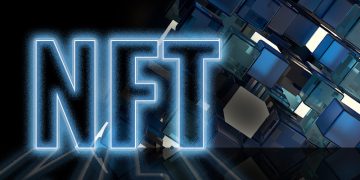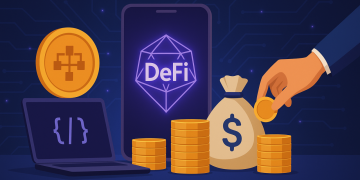Introduction
Blockchain technology has gained significant attention due to its decentralized and secure nature. As more industries and applications adopt blockchain, security becomes an increasingly vital focus. While blockchain itself offers a strong foundation for secure transactions and data integrity, the landscape of cybersecurity threats is constantly evolving. Cybercriminals continuously devise new attack methods, and for blockchain technology to remain secure, it must adapt and innovate in response to these challenges.
In this article, we will explore how blockchain security addresses the changing nature of cyber threats, focusing on the mechanisms that safeguard the network, the current threats it faces, and the ongoing advancements in blockchain security.
1. How Blockchain’s Core Features Enhance Security
To understand how blockchain is adapting to emerging cyber threats, we must first recognize the inherent features of blockchain that already provide robust security:
1.1 Decentralization
One of the key attributes of blockchain is its decentralized nature. Unlike traditional centralized systems where data is stored in a single location (vulnerable to attacks), blockchain data is distributed across a network of nodes (computers). This makes it:
- Resilient to single points of failure: Since the data is replicated across multiple nodes, even if one node is compromised, the rest of the network remains secure.
- Censorship-resistant: Since no central authority controls the blockchain, it is less susceptible to censorship or data manipulation.
1.2 Cryptographic Hashing
Blockchain uses cryptographic hashing to secure data. Each block in a blockchain is linked to the previous block through a cryptographic hash, making it almost impossible to alter any block without changing the entire chain. This ensures:
- Data Integrity: Once information is added to the blockchain, it cannot be easily tampered with.
- Immutability: Hackers would need to change every block in the chain, which is computationally infeasible due to the high level of cryptographic security.
1.3 Consensus Mechanisms
Blockchain networks use consensus algorithms (like Proof of Work, Proof of Stake, etc.) to validate transactions and secure the network. This is crucial for preventing malicious actors from taking control of the system.
- Proof of Work (PoW) makes it computationally expensive to alter transaction data by requiring large amounts of computational power, which deters attackers from manipulating blocks.
- Proof of Stake (PoS) reduces energy consumption while securing the network by incentivizing validators to act honestly.
These consensus mechanisms are designed to keep the network secure by ensuring that no single participant can alter the data unilaterally.
2. Emerging Cyber Threats Targeting Blockchain Networks
Although blockchain has strong inherent security, it is not immune to evolving cyber threats. Some of the primary risks facing blockchain networks today include:
2.1 51% Attacks
A 51% attack occurs when an entity gains control of more than 50% of the network’s mining or staking power. This gives them the ability to:
- Double spend coins or tokens.
- Prevent transactions from being confirmed.
- Rewrite transaction history to their benefit.
While this is particularly a concern for Proof of Work (PoW) blockchains (like Bitcoin), Proof of Stake (PoS) blockchains are also vulnerable, albeit to a lesser extent. The more decentralized the network, the less likely such an attack is to succeed.
2.2 Smart Contract Vulnerabilities
Smart contracts are self-executing agreements with terms directly written into code. They are crucial components of decentralized applications (dApps) and DeFi protocols. However, smart contracts can be vulnerable to bugs or exploits, such as:
- Reentrancy attacks: A vulnerability where an attacker can repeatedly call a smart contract, draining funds before the contract’s balance is updated.
- Logic flaws: Errors in the contract code that can lead to unintended outcomes or loss of funds.
- Rug pulls: Malicious smart contract creators can exploit vulnerabilities to withdraw liquidity from decentralized exchanges or steal funds.
Smart contract vulnerabilities can lead to severe financial losses and damage trust in the platform.
2.3 Phishing and Social Engineering Attacks
While blockchain provides robust security, the human element remains a major vulnerability. Phishing and social engineering attacks are common, where attackers:
- Mimic legitimate blockchain services (wallets, exchanges) to steal private keys or access credentials.
- Prey on inexperienced users to trick them into transferring funds to fraudulent addresses.
Given the irreversible nature of blockchain transactions, these attacks can result in permanent losses.
2.4 Sybil Attacks
A Sybil attack occurs when an attacker creates multiple fake identities (nodes) within a network to gain a disproportionate influence over the consensus mechanism. This can compromise the fairness of the network by allowing the attacker to skew voting or validation results.
3. How Blockchain Security is Evolving to Combat These Threats
To counter these emerging risks, blockchain security is continuously evolving. Below are several strategies and advancements in blockchain technology designed to improve security:
3.1 Layered Security Architecture
Blockchain developers are adopting layered security approaches to make it harder for attackers to exploit vulnerabilities. This includes:
- Multi-signature wallets: Requiring multiple signatures before transactions are authorized, adding an additional layer of protection against unauthorized access.
- Hardware security modules (HSMs): Secure devices that store private keys and cryptographic operations, making it harder for hackers to steal keys even if they gain physical access to a machine.
3.2 Smart Contract Audits and Formal Verification
Smart contract audits are now becoming an industry standard. Independent third-party companies examine the code for bugs, vulnerabilities, or potential exploits. Formal verification methods are also being developed, which mathematically prove the correctness of the smart contract code.
- Code audits identify issues before they can be exploited in real-world scenarios.
- Formal verification ensures that the logic of the smart contract behaves as intended, mitigating risks associated with vulnerabilities.

3.3 Decentralized Identity Solutions
Decentralized Identity (DID) systems are gaining traction as a way to combat phishing and social engineering attacks. By leveraging blockchain for secure, self-sovereign identity management, users can authenticate themselves without revealing personal information or relying on centralized identity providers.
DID systems reduce the risk of identity theft and phishing by giving users control over their personal data.
3.4 Zero-Knowledge Proofs (ZKPs)
Zero-Knowledge Proofs (ZKPs) are cryptographic methods that allow one party to prove to another that they know a piece of information without revealing the actual information. ZKPs are particularly useful for:
- Private transactions: Users can prove that they have sufficient funds to complete a transaction without revealing the actual amount.
- Secure voting systems: Users can vote without exposing their identity or vote choice, preserving privacy.
ZKPs are being incorporated into various blockchain networks to enhance privacy and security while reducing the risk of data leaks or attacks.
3.5 Advanced Consensus Mechanisms
To address the risks of 51% attacks and Sybil attacks, blockchain networks are adopting more advanced and secure consensus mechanisms:
- Proof of Stake (PoS): Networks like Ethereum 2.0 are transitioning to PoS, which is less resource-intensive than PoW and more resilient against centralization.
- Delegated Proof of Stake (DPoS): A variation of PoS where delegates are elected to validate transactions, making it more scalable and resistant to attacks.
- Practical Byzantine Fault Tolerance (PBFT): Used in permissioned blockchains, PBFT ensures consensus even if some nodes act maliciously or fail, increasing the security of the network.
3.6 AI and Machine Learning for Threat Detection
Blockchain projects are beginning to integrate artificial intelligence (AI) and machine learning (ML) algorithms to detect and respond to threats in real-time. These technologies can:
- Identify abnormal behavior patterns within the network, such as unusual transaction volumes or frequent changes in staking behavior, which could indicate a potential attack.
- Predict vulnerabilities based on historical data and emerging attack methods, allowing proactive security measures to be implemented.
4. Conclusion: Adapting Blockchain Security to the Changing Cyber Threat Landscape
Blockchain technology is inherently secure, but it is not invulnerable. As the threat landscape continues to evolve, blockchain must also adapt to keep up with new challenges. From smart contract audits and zero-knowledge proofs to advanced consensus mechanisms and AI-driven threat detection, the blockchain ecosystem is actively developing tools to safeguard against the most sophisticated cyber threats.
The future of blockchain security lies in proactive, layered defense strategies, combining decentralized architecture, cryptographic solutions, and real-time threat intelligence to ensure that blockchain continues to fulfill its promise of a secure, transparent, and immutable digital ecosystem.
By continuously evolving its security protocols, blockchain technology can stay ahead of emerging threats and remain a cornerstone of the digital economy.
















































